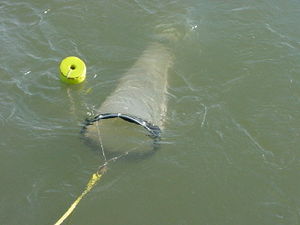Organochlorines in particles and zooplankton from the Belgian part of the North Sea and the Scheldt estuary
Context of the study
It has been shown that PCBs in sea water can adsorb to the cell walls of unicellular organisms. They also enter these cells and dissolve in their lipids. PCBs can also adsorb to the lipid fractions of sediments. [1]
Content of the study
This study investigated the association of PCBs with sediments and compared the PCB content of the sediment with those of the zooplankton. The study was based on samples from the Western Scheldt estuary and from the Belgian part of the North Sea. Everything caught in a net with a mesh size of 0,5 mm, was considered zooplankton, although it also consisted of fish larvae and sometimes fish eggs.
Main results of the study
The study showed that sediment PCB concentrations depended on the lipid content of the particles and not on their size. Particles with a high lipid content had higher PCB concentrations. This suggests that the main source of PCBs into the sediments is sedimentation of biological material. As these lipids are broken down by biological activity, the PCBs become redistributed into the water column. The sediments can therefore not be considered as a sink for PCBs, although they contain an enormous stock of them because of their high amount of organic matter. Sediments, both in the Scheldt estuary as in the North Sea, contained 20µg/g PBCs (in lipid weight)
In zooplankton samples no relation between PCBs and their lipid content was observed. Concentrations, in lipid weight, were lower in zooplankton than in suspended particles (food for zooplankton, including phytoplankton). Therefore zooplankton must be able to reduce their uptake of PCBs or be able to eliminate them. Dilution mechanisms have also been suggested: the lipids formed by the zooplankton don't contain PCBs, causing a lower PCB concentration expressed per gram lipid in the zooplankton.[1]
References
Please note that others may also have edited the contents of this article.
|
